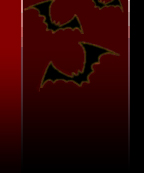|
Castlevania: Order of Ecclesia (2008)

The release of Castlevania: Symphony of the Night in 1997 began a new subseries within the franchise, which we all know as "Metroidvanias". Since the release of the PSOne title, there have been six more entries, all for portably Nintendo systems, within the past dozens years or so. Like the NES Mega Man names, none of them are actually "bad", but rather just varying degrees of "fairly good". But even the most forgiving Castlevania fan can probably admit that, yes, the formula just might be growing a little bit stale. Castlevania: Order of Ecclesia for the Nintendo DS isn't quite the breakout title that rebirthes the series and takes it out of rehash territory. But it is, however, a step in the right direction.
Since it was unveiled, Order of Ecclesia has been extensively compared to Simon's Quest. (The Japanese title, "Ubawareta Kokuin" or "The Stolen Seal", is even similar to Noroi no Fuuin, or "The Cursed Seal".) This isn't entirely accurate - while it's the first Metroidvania where you actually get to explore areas outside the castle, it's still not quite structured the same way. Instead, the countryside is broken up with an overhead map, allowing you to select your area. Once you conquer an area by leaving through the exit, the next area will open up, and so forth. Each stage is relatively small and usually fairly linear, so it's not quite as focused on exploration as the other titles. That being said, some of them do feature hidden areas and other knick nacks. In fact, fully exploring them is required to save all of the villagers hidden throughout the land. When you begin, the town of Wygol is almost completely barren. As you rescue more people, they settle down and open up shops, or give out quests, similar to the Wind quests from Portrait of Ruin. Rescuing all of them is also required to unlock the second half of the game - a traditional Castlevania castle to explore.
The map isn't a bad idea, but it also feels a bit unnecessary. The first few areas feel particularly disjointed, since they're so short. It does take you out of the action to pop into a map screen, and almost ruins the cohesiveness of the game world, something Castlevania has always taken very seriously. Why not simply make a continuous game world, but with teleport stations at each end of the stage? That way, you could simply walk to the next area, or pick somewhere else, if you needed to quick travel.
At any rate, Order of Ecclesia is a lot fresher than any of the previous Metroidvania games. Although a few reused sprites have snuck, nearly all of the enemies are brand new, or at least alternate renditions of classic Castlevania foes. The outdoor environments - caves, forests, etc. - are also a welcome change of pace. One of the coolest stages in the beginning is a prison, complete with a spotlight. If you get caught, it'll send out some overtly powerful nasty at you, pretty much forcing you to leave the screen as quickly as possible. Unfortunately, some of the stages are still padded out with repeated environments. The previous games have had reused rooms and hallways, but Order of Ecclesia is quite bad with the cut and paste areas, particularly in the late stages of the game. Still, it's not nearly as bad as Portrait's reversed levels.
The heroine of the game - the first female to take the stage since Sonia Belmont from Castlevania Legends (who was subsequently removed from the canon) - is Shanoa, a young girl with the power to absorb magical powers called Glyphs. She's part of the Order of Ecclesia, a church-like organization who has come to fight against Count Dracula, after the Belmonts mysteriously disappeared. Right before she uses the powerful Dominus Glyph to slay Dracula, it's stolen by the mysterious Albus, who strangely resembles Balthier from Final Fantasy XII, right down to the fancy gun. Naturally, things aren't quite what they seem, and the mid-game plot twist can be easily predicted in the opening stages of the game. It takes itself a lot more seriously than the previous DS games, which means it's a bit less goofy, but it's also a bit on the dull side.
Shanoa doesn't wield regular weapons, but rather uses her Glyphs to attack. A number of enemies drop Glyphs when defeated, but not all of them. In many ways, it's a combination of the DSS card system from Circle of the Moon and the Soul System from Aria/Dawn. Each attack will drain magic, which quickly regenerates after a few seconds of non-use. Of course, the amount of magic expended depends on the type of attack - regular swords don't chew up much power, but you can typically only use a stronger magic spell a few times before it needs to restore. The real key here is that you can equip two Glyphs at once. This feature has been around since Symphony of the Night, but was never really put to good use. Here, if you tap both buttons bacn and forth, in the proper rhythm, you'll execute a combo unleashing several attacks, one after another, without any recovery period. More importantly, however, are the elemental effects. Again, they've always been there, but they were rarely of any use. Here, paying attention to enemies and their strengths and weaknesses is essential, otherwise you'll end up stumbling through a stage doing piddling damage. In many ways, it's similar to the attribute system from Square's Vagrant Story as implemented in an action game, although it's considerably less confusing.
You can also (awkwardly) switch between Glyph combinations by holding A and pressing L or R. All of the Metroidvania titles have had a huge selection of weapons, but most of us just stuck with the same few weapons throughout the course of the game. Order of Ecclesia requires that you constantly change things up, requiring that you balance versatile attacks with elemental damage and MP usage.
The two Glyphs you've equipped will also determine what kind of special attack you'll execute. Many of them give out a generic "dud" attack (which is still useful) but others are extremely powerful. However, these drain from your hearts supply - and, compared to other games, the hearts aren't exactly in abundance. In most cases, you can only execute it a handful of times before you're out of ammo, so to speak, meaning you really need to put careful thought into when you use them. Of course, it's too easy to execute them accidentally, or begin the attack and then interrupting it with a quick movement, causing it to fail and still eat up hearts. It feels like, for the first time in a Metroidvania game, there's actually some semblance of balance. This also means that it's easily the hardest of its type, perhaps only rivaled by (again) Circle of the Moon. Aria, Dawn, and Portrait had some vaguely difficult boss battles, but Ecclesia will often require you to retreat back to town to heal wounds, because even regular enemies pack quite a punch.
Where Ecclesia truly stands out are the boss fights. Other than the requisite fights with Death and Dracula, not a single one is recycled or reused from other Castlevania games. The first notable one is a battle against a giant grab in the tower of a lighthouse, which ends as you crush it against the ground with an elevator. Quite satisfying! Others include Blackmore, a gigantic wolf shadow that takes up nearly the entire height of the screen, and Elligor, who actually takes up one quarter of the screen and rivals Garamoth as the largest boss in Castlevania history. Like of the rest of the game, these battles are TOUGH, and you'll probably die multiple times on each one, until you figure out the pattern. (The game rewards you with medals if you manage to kill one without being hurt.) In most fights, even with strong equipment and stat enhancements, you can be killed in three or four hits. On the other hand, the bosses tend to have huge amounts of HP and can often take a few minutes to bring down. One only has to remember one of the most intense battles in Castlevania - the first battle against Count Dracula. It's remarkably tough, but he can be killed in roughly a minute. Stretching things out is a lousy way to make them more difficult - it just makes the battles more tedious, so they feel more like battles of endurance rather than battles of skill. And please, please bring back the enemy health bars, IGA! They've been around since the first game and were cut from all Metroidvanias for some annoying reason!
Compared to the relatively bright Portrait of Ruin, Order of Ecclesia is much darker in tone. The character designs are now provided by newcomer (to Castlevania, anyway) Hirooka Masaki rather than Ayami Kojima, and they're certainly much closer in spirit than the manga inspired look of the other DS entries. The colors, too, are much darker and moodier, as is the story.
Portrait of Ruin had a game soundtrack that was happy to be a game soundtrack - it even used drum samples straight out of the old Haunted Castle arcade game. The arranged versions featured on the CD release actually ended up sounding worse, just because the synth choices they made couldn't stack up to the DS's (slightly fuzzy) instrumentation. Order of Ecclesia's music, much like the rest of the game, is a bit more refined and mature. It's not as immediately catchy, but its melodies - particularly the piano in several songs - sticks with you once you've heard a couple of times. In many ways, it's an evolution of the music from Dawn of Sorrow, in that its similar in style, while possessing a bit more flavor.
The problem is, these are definitely songs that could've used high quality instrumentation a la Symphony of the Night (or even Dracula X Chronicles). When restricted to the sample-based DS music, it lacks the presence it deserves. (As a side note, the few arranged songs on Ecclesia's soundtrack CD are much better than Portrait's, although still cheaply done and not nearly as well produced as they should be.) A few old songs show up in remixed forms, including Tower of Dolls (from Castlevania X68000) and Riddle from Castlevania III. You can also find/buy hidden records that play NES-style renditions of classic tunes too.
It's interesting to see the direction the Metroidvanias are taking. The smaller levels and increased difficulty level seems to show that the series is moving a bit closer to its roots, while still keeping its role playing and exploration elements. And yet, it still feels a bit uncomfortable with itself. Why not tighten up the level design even more, add some more platforming elements, maybe even bring back the lives system? There's got to be a better way to balance things, to please both old school Castlevania fans and newcomers who came onboard post-Symphony. Strangely enough, the opposite problem plagues Capcom's Megaman ZX series, which has the action/platforming part down pat, but flounders haplessly with the exploration aspects. So while Order of Ecclesia still doesn't quite have it perfect, it does show that IGA and crew are willing to be more than flexible, and shows a welcome evolution to the series.
Order of Ecclesia Artwork

Back to Top
Castlevania Games - Castlevania: Order of Ecclesia
|
|
|



